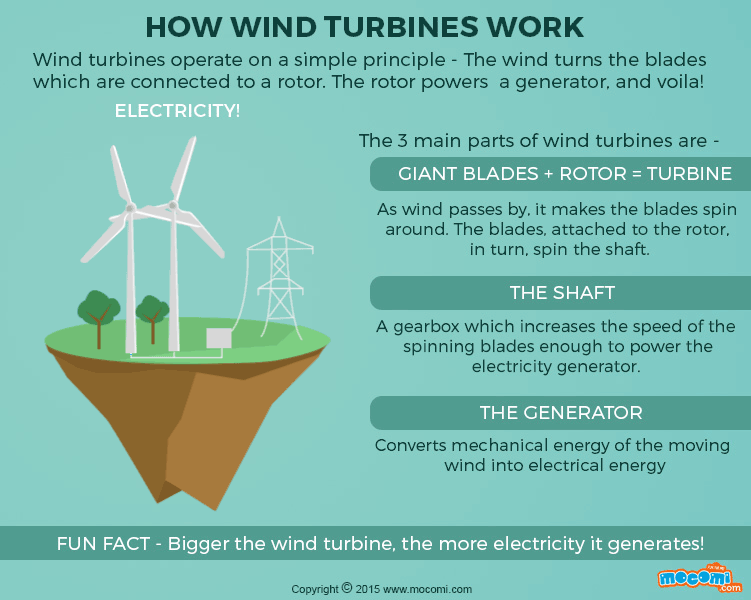How does a wind turbine generate electricity
The giant fans you sometimes see (mostly in the countryside) are wind turbines. Although they look like fans, spinning around in place, functionally, they’re the opposite of fans. Instead of using electricity to generate wind, as fans do, wind turbines use wind to generate electricity. Sound interesting? Let’s find out how.
Wind turbines operate on a simple principle. The wind turns the two or three blades around a rotor connected to the main shaft. The shaft spins and is connected to a generator which creates electricity.
Now that we know the principle, let’s look at the parts and working a little closely.
Parts of a wind turbine
Although we talk about “wind turbines,” the turbine is only one of the three main parts inside these giant machines.
- Turbines – The first part of course, is the turbine. The giant blades and the rotor (hub) together make up the “turbine”. As wind passes by, it makes the blades spin around. These blades have an aerodynamic curved shape so as to capture as much energy from the wind as possible. The blades are attached to a hub, which spins as the blades turn. As the rotor turns, it spins a drive shaft which is connected to a generator inside the housing at the top of the tower.
- Shaft – The second part, the shaft, is actually a gearbox which increases the speed of the spinning blades enough to power the electricity generator.
- Generator – The third part is the generator, which converts mechanical energy of the moving wind into electrical energy, with the help of the spinning shaft.
The amount of electricity that a turbine is able to produce depends on two things –
- The diameter of the rotor
- The speed of the wind that propels the rotor.
Thus, bigger the wind turbine, the more electricity it generates!
Find More
- Get more information about Wind Farms, Click here.
- Read about What is Electricity? and Who discovered Electricity?, visit: https://mocomi.com/who-discovered-electricity/



@hihihihi Thank you so much!
@Molly 🙂
@Molly Thank you!
@hihihihi Thank you very much!
@hihihihi Thank a lot!
@hihihihi Thank you!
Thank you!
This was a good explanation text for people interested in this topic.
Good article.
Good